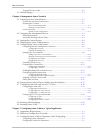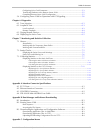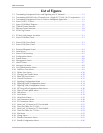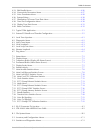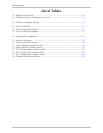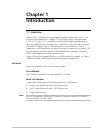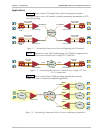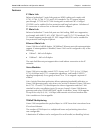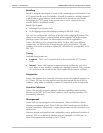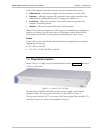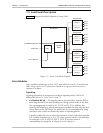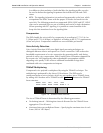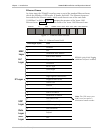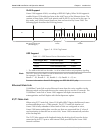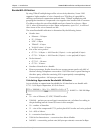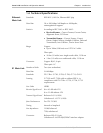
Chapter 1 Introduction Vmux-2100 Installation and Operation Manual
1-4 Overview
Bundling
Bundle is a logical internal port of Vmux-2100, containing up to 60 timeslots. Each
E1/T1 group handles up to five bundles. A bundle is routed to a defined remote IP
address (remote group address). Each timeslot can be included in any bundle
belonging to its E1/T1 group. At the remote site, it can be connected to any
timeslot within a destination bundle.
Bundle QoS support:
• Labeling IP level priority (ToS).
• VLAN tagging and priority labeling according to IEEE 802.1 p&q.
The user can configure the ToS (Type of Service) of the outgoing IP packets. This
allows an en-route layer 3 router or switch, which supports ToS, to give higher
priority to Vmux-2100 traffic for delay-sensitive and secure applications.
Vmux-2100 allows you to configure the whole ToS byte field, since different
vendors may use different bits to tag packets for traffic prioritization. This also
enables you to work according to various RFC definitions (for example RFC 2474,
RFC 791).
Timing
Available timing modes are:
• Loopback – The E1 or T1 transmit clock is derived from the E1/T1 receive
clock.
• Internal – Vmux-2100 features a separate internal oscillator for each voice
card. When a voice module is configured to operate in internal clock, transmit
(Tx) and receive (Rx) trunks use the clock supplied by its internal oscillator.
Diagnostics
Vmux-2100 supports local (internal) and remote (external) loopback activation on
E1/T1 links. The user can also perform tone injection towards the local PBX. In
addition, a ping utility is included to confirm IP connectivity to the remote units.
Statistics Collection
Vmux-2100 provides extensive statistics collection capabilities which include:
Ethernet (as per RFC 1643) and HDLC statistics, voice, signaling, bundles, CPU
and memory utilization.
Management
Vmux-2100 can be managed via a local terminal, Telnet or RADview, RAD’s
network management system. Vmux-2100 has a DB-9 female port for the direct
terminal connection. Alternatively, a supervisory terminal can be connected via a
modem link.
Software upload and download and configuration can be performed via the local
terminal, TFTP or via RADview. Remote units are managed via Telnet over an
inband management link running on an E1/T1 link.



